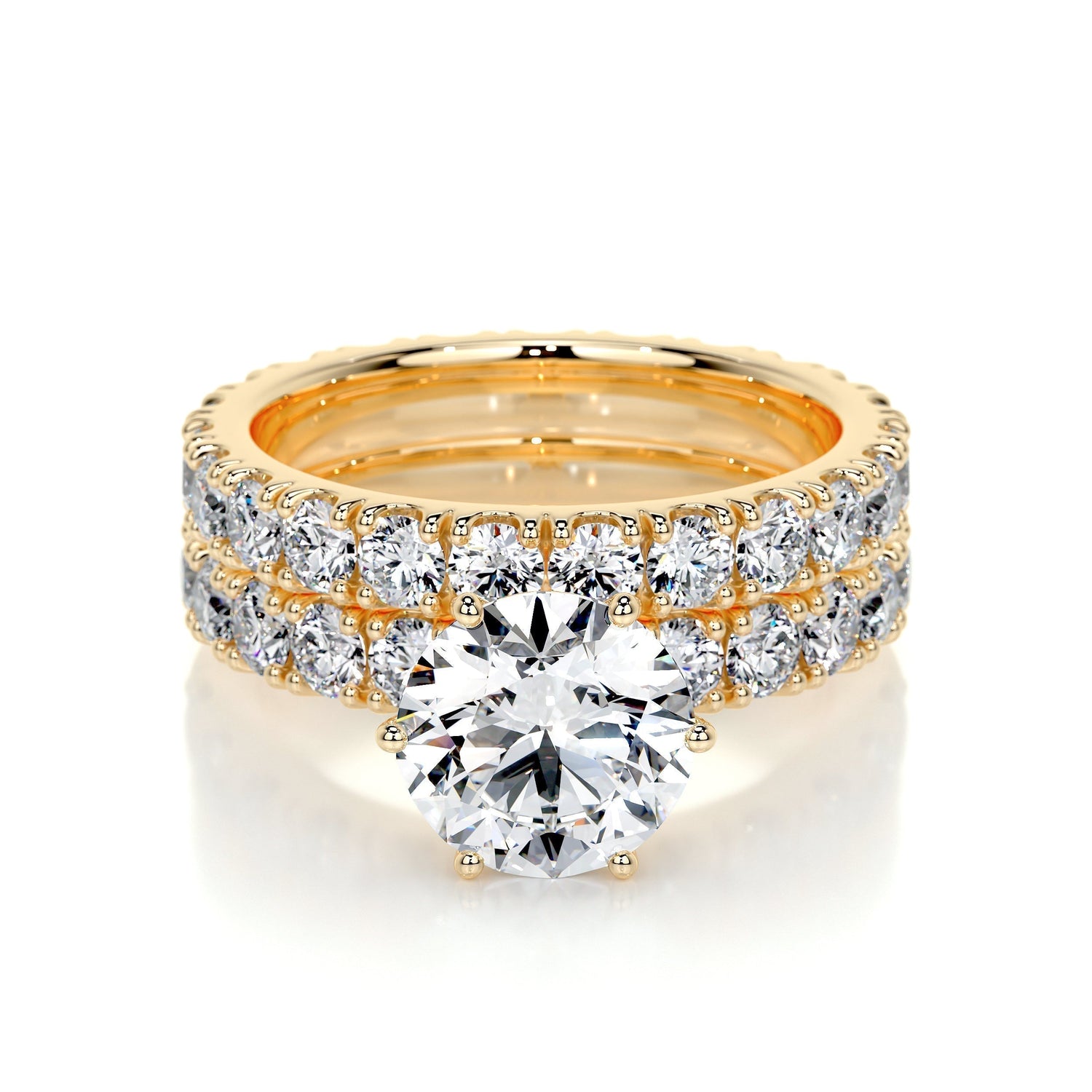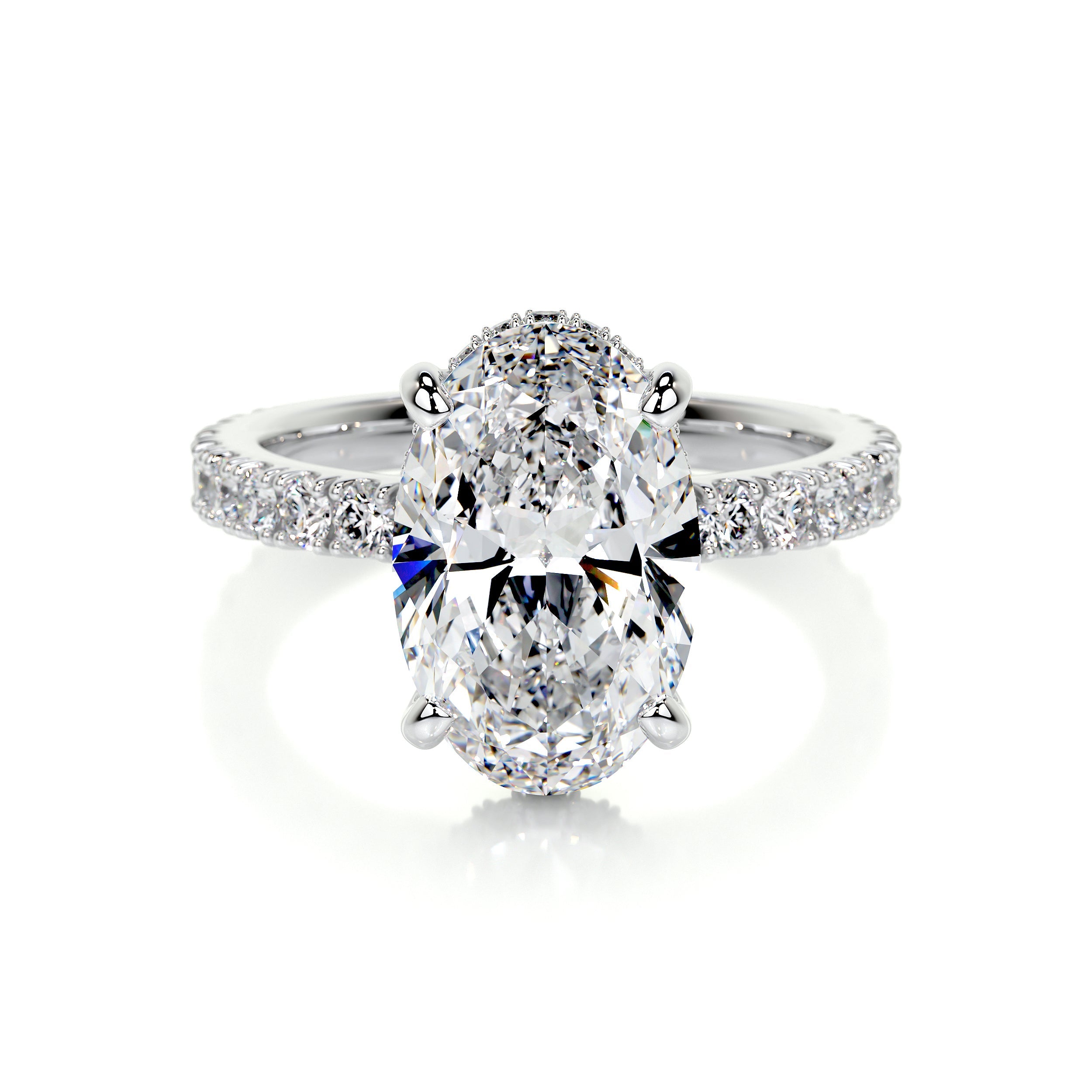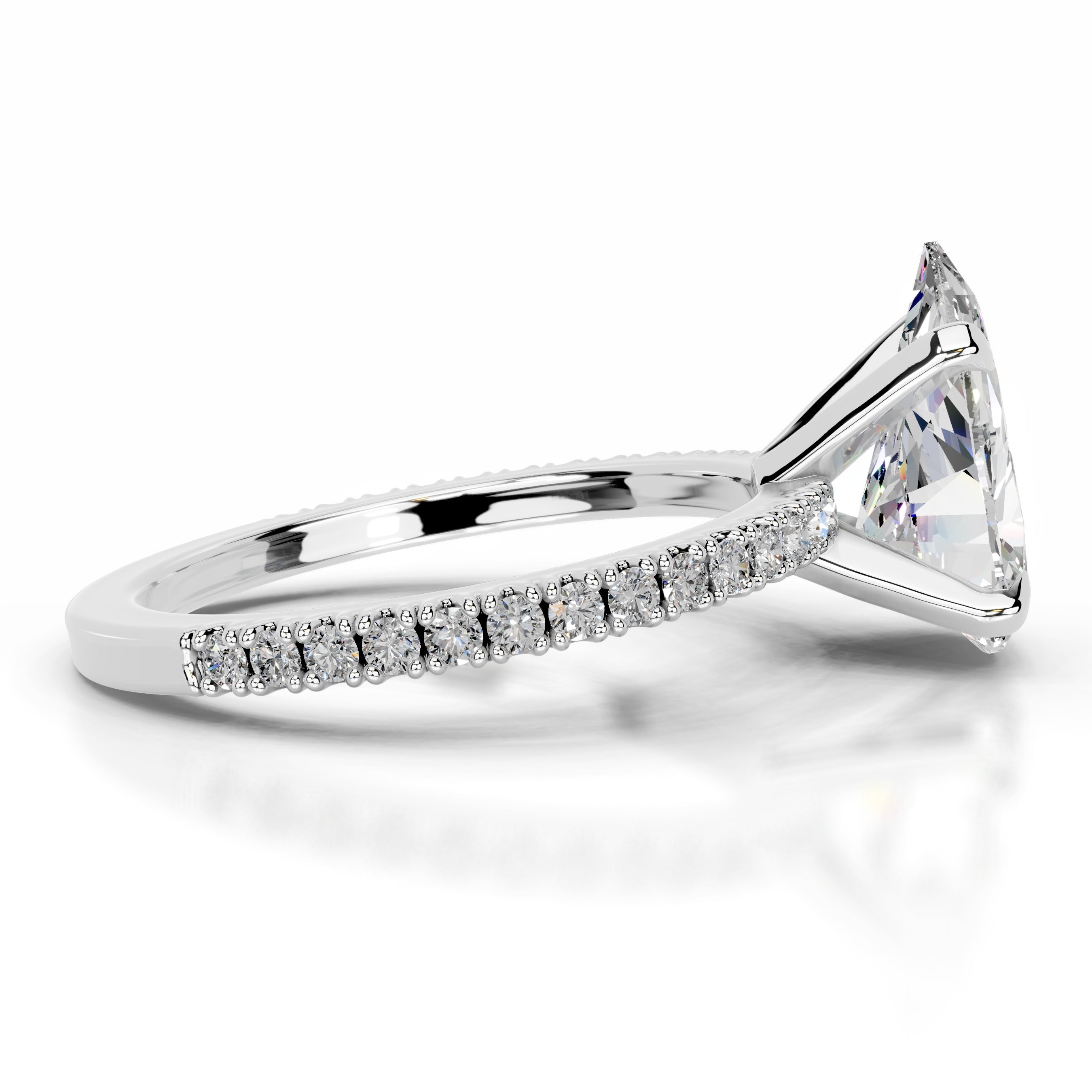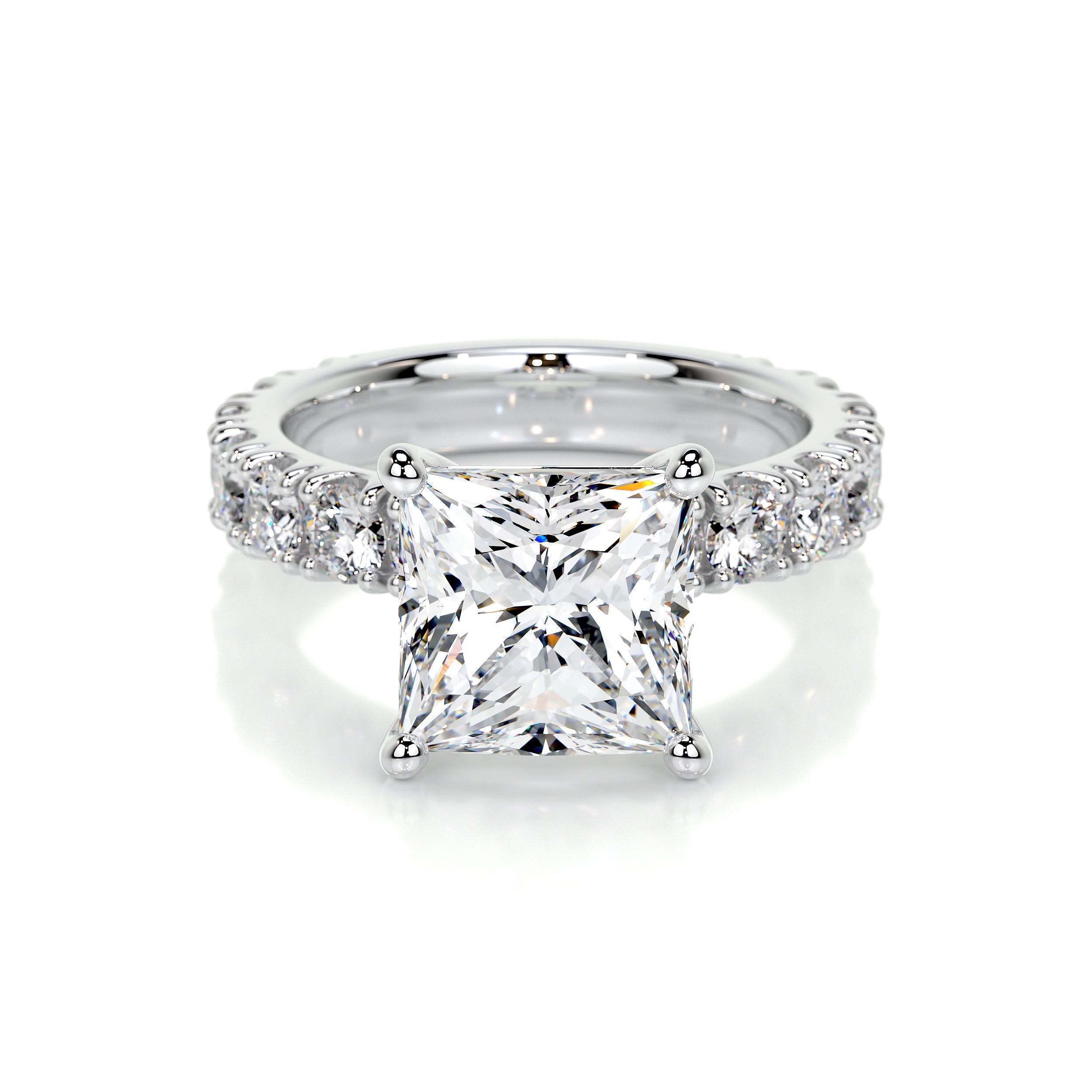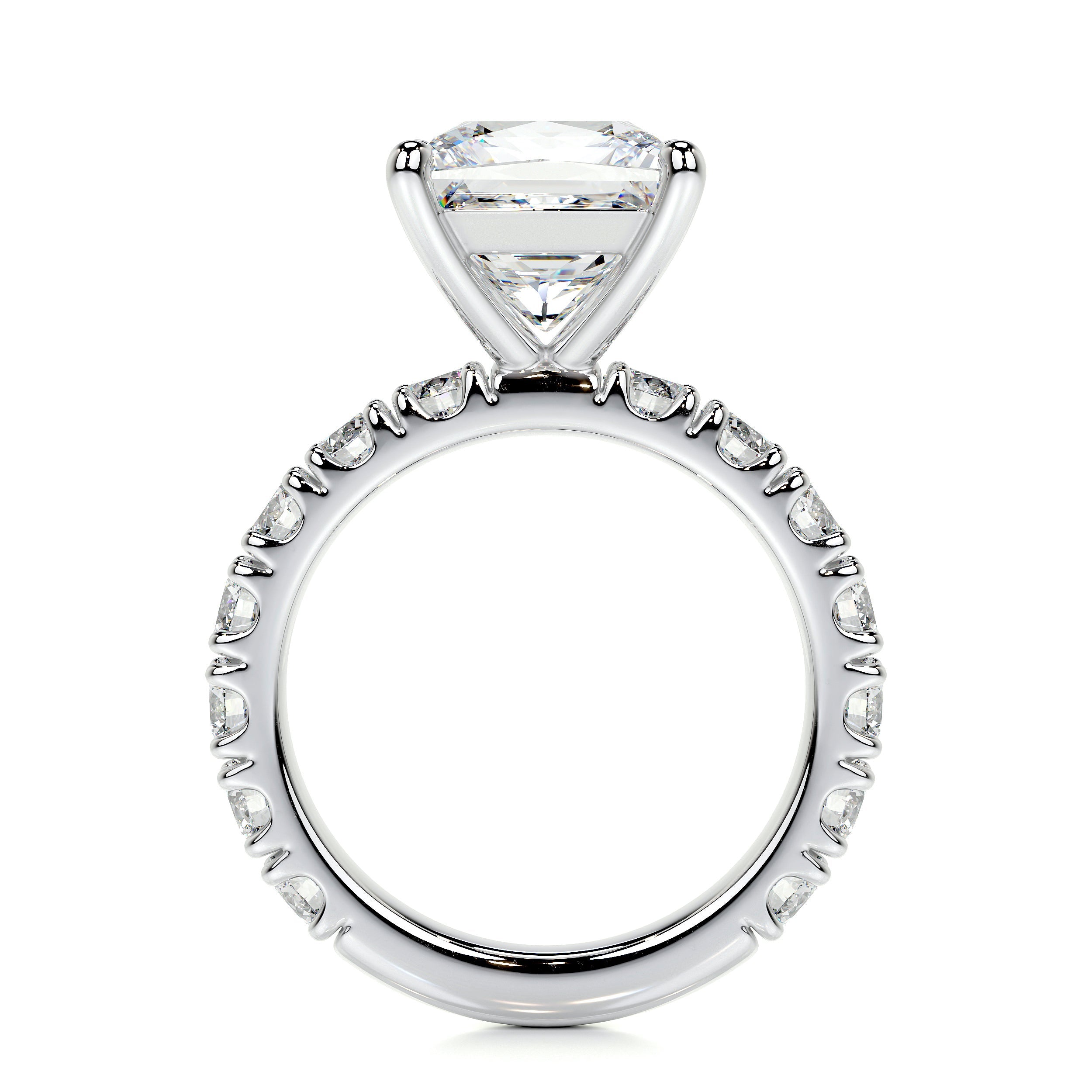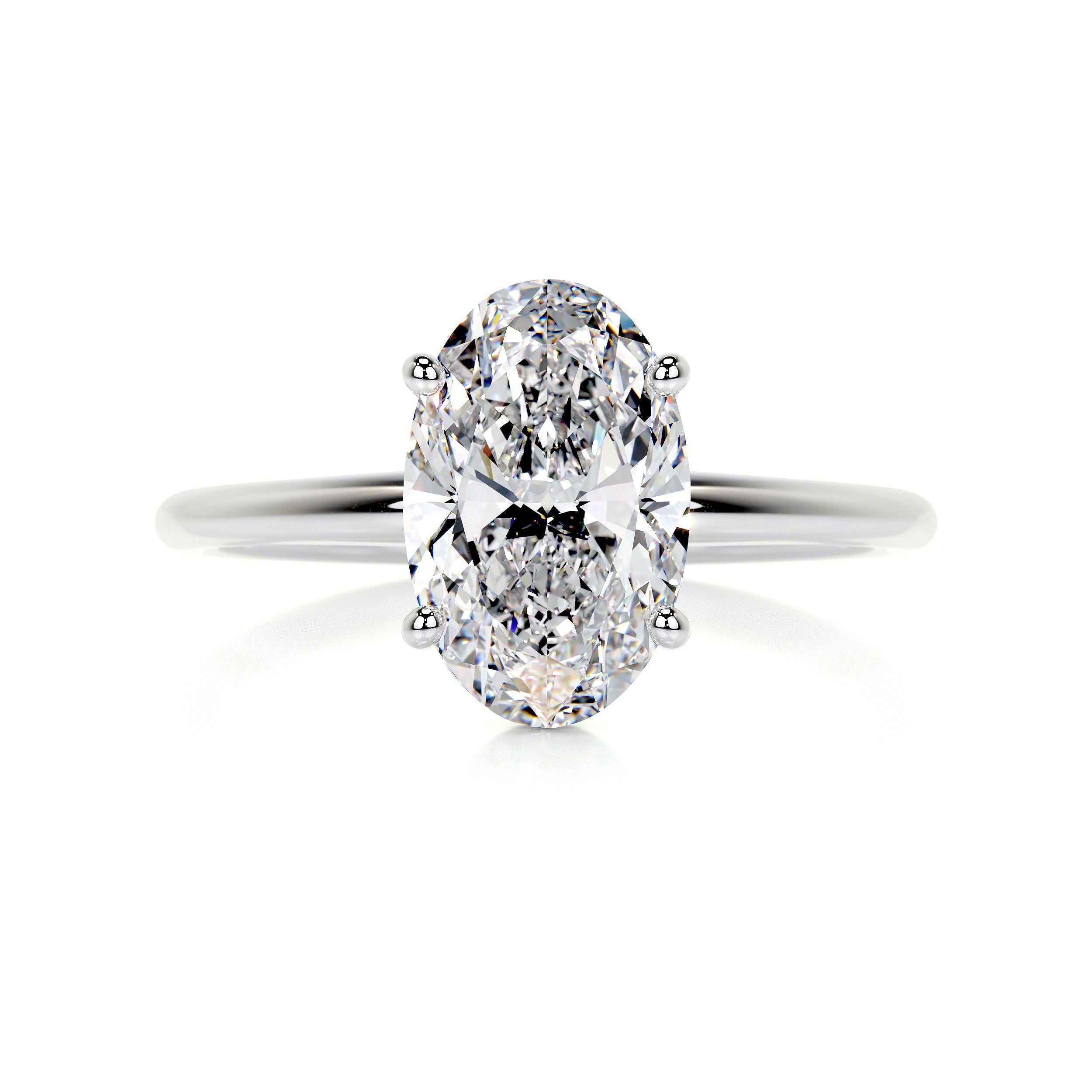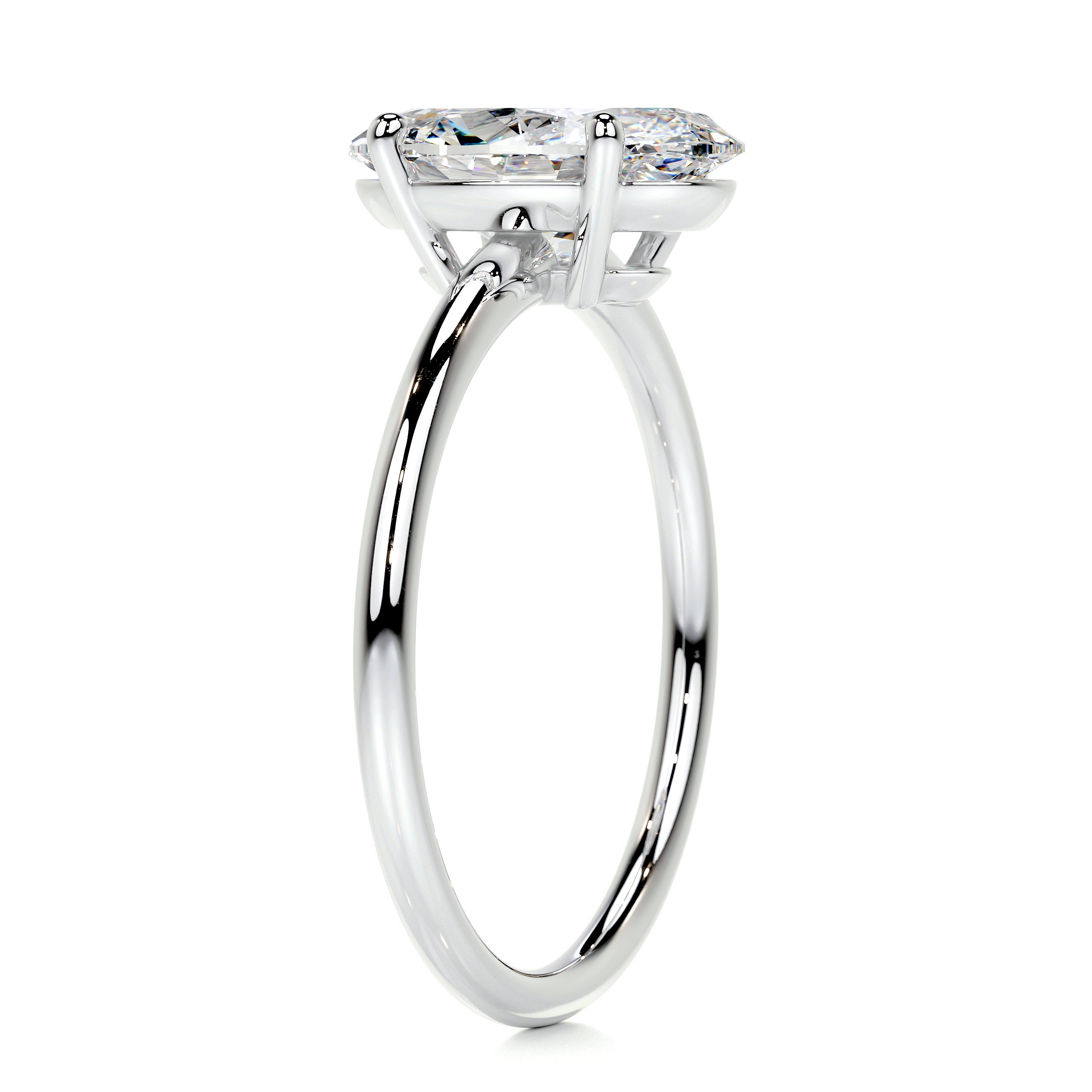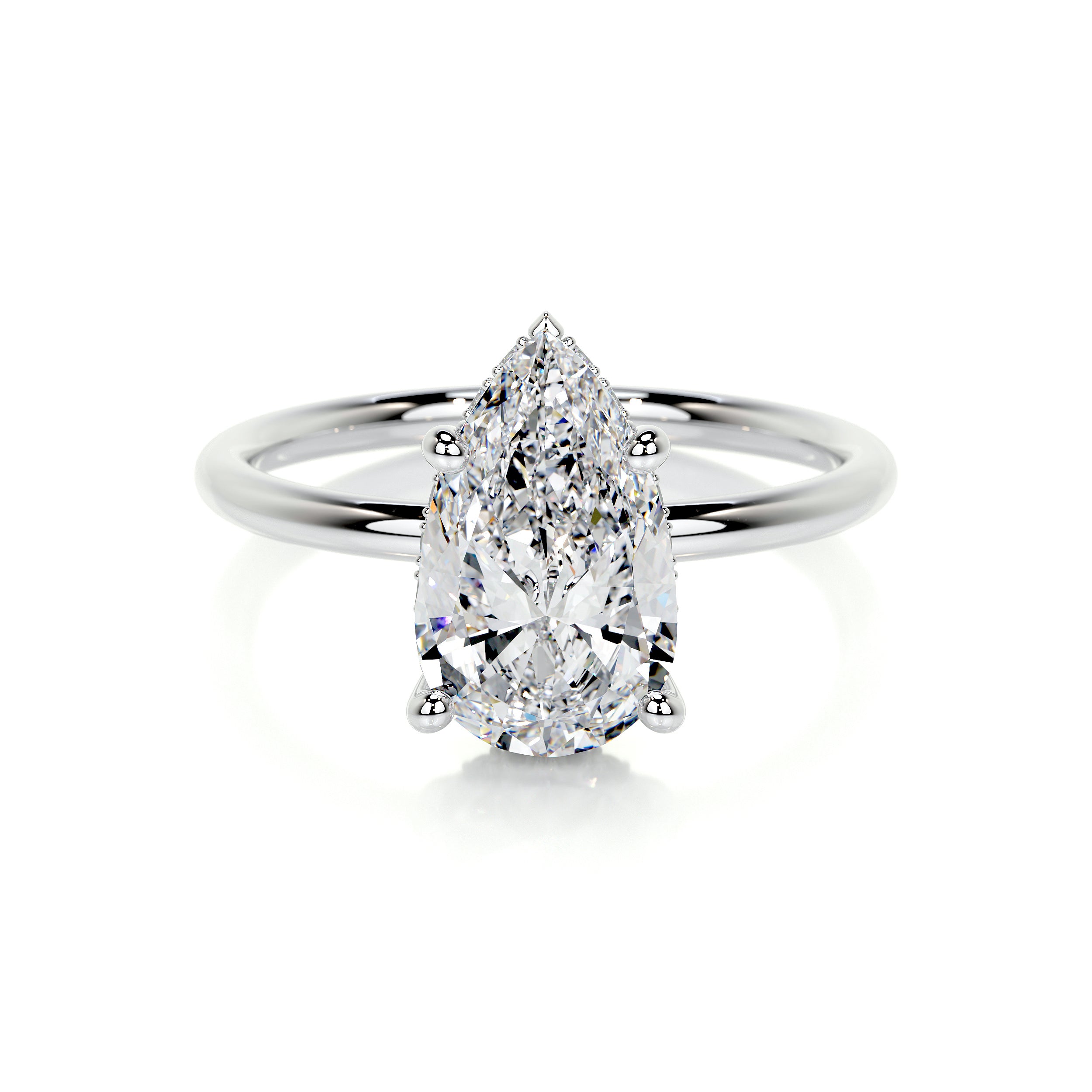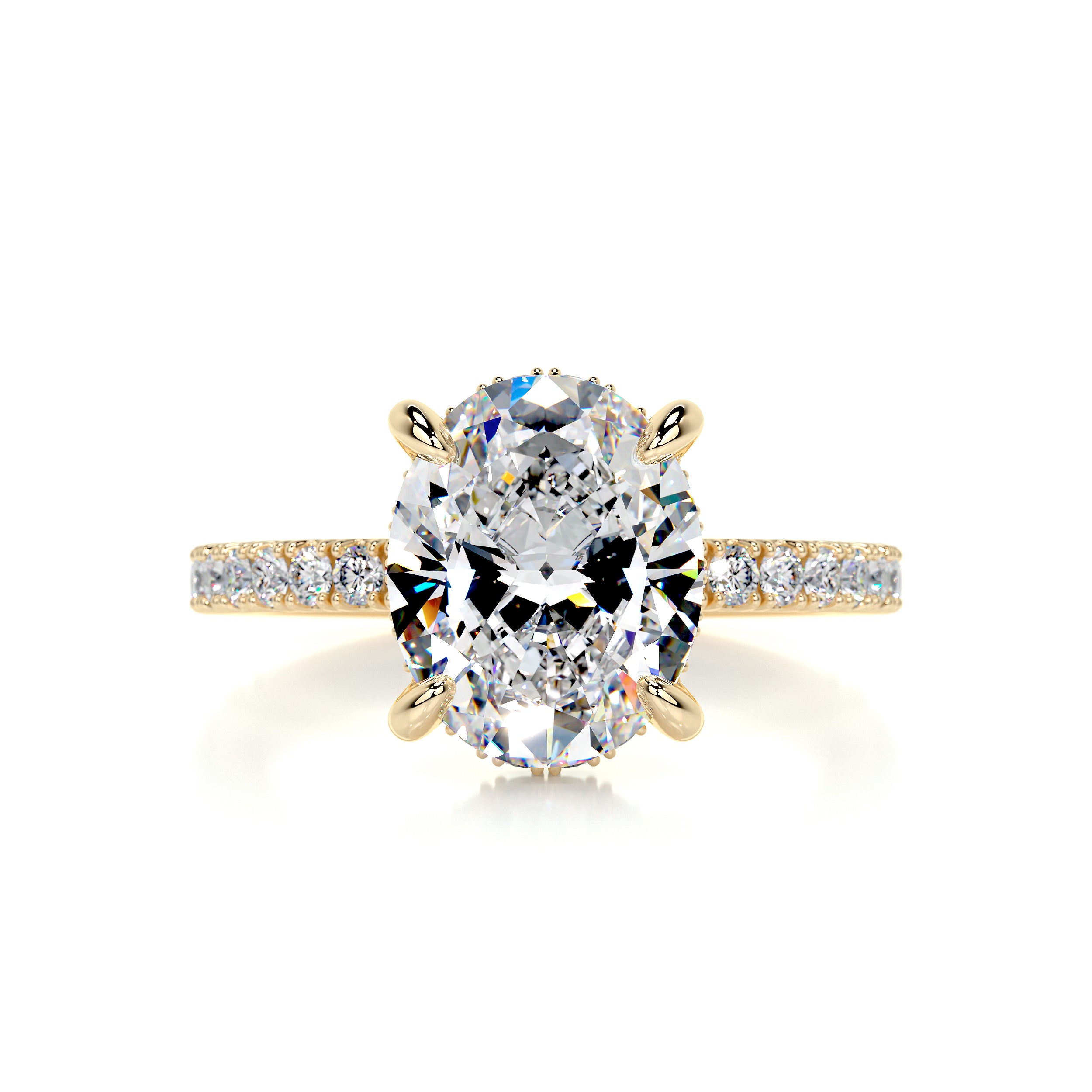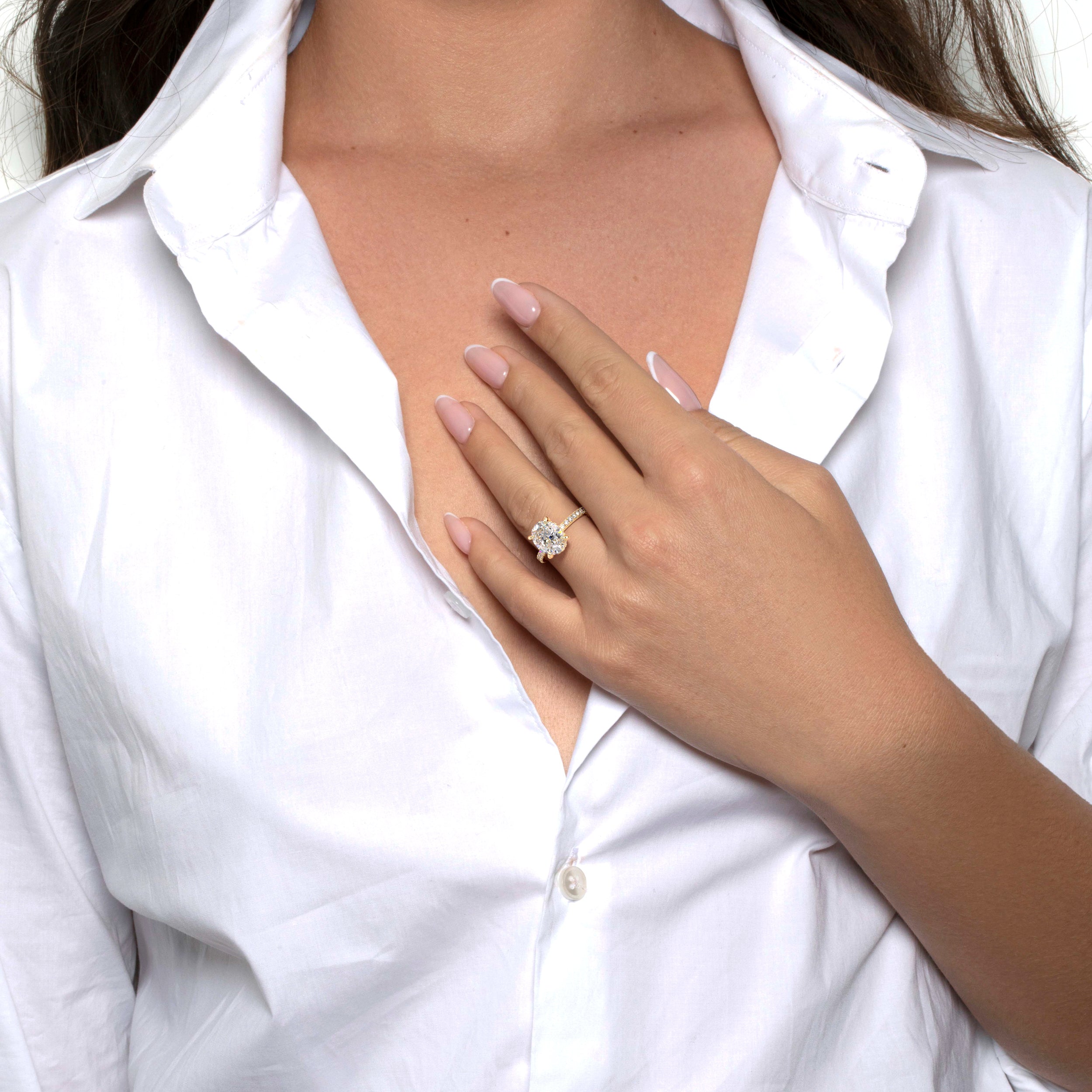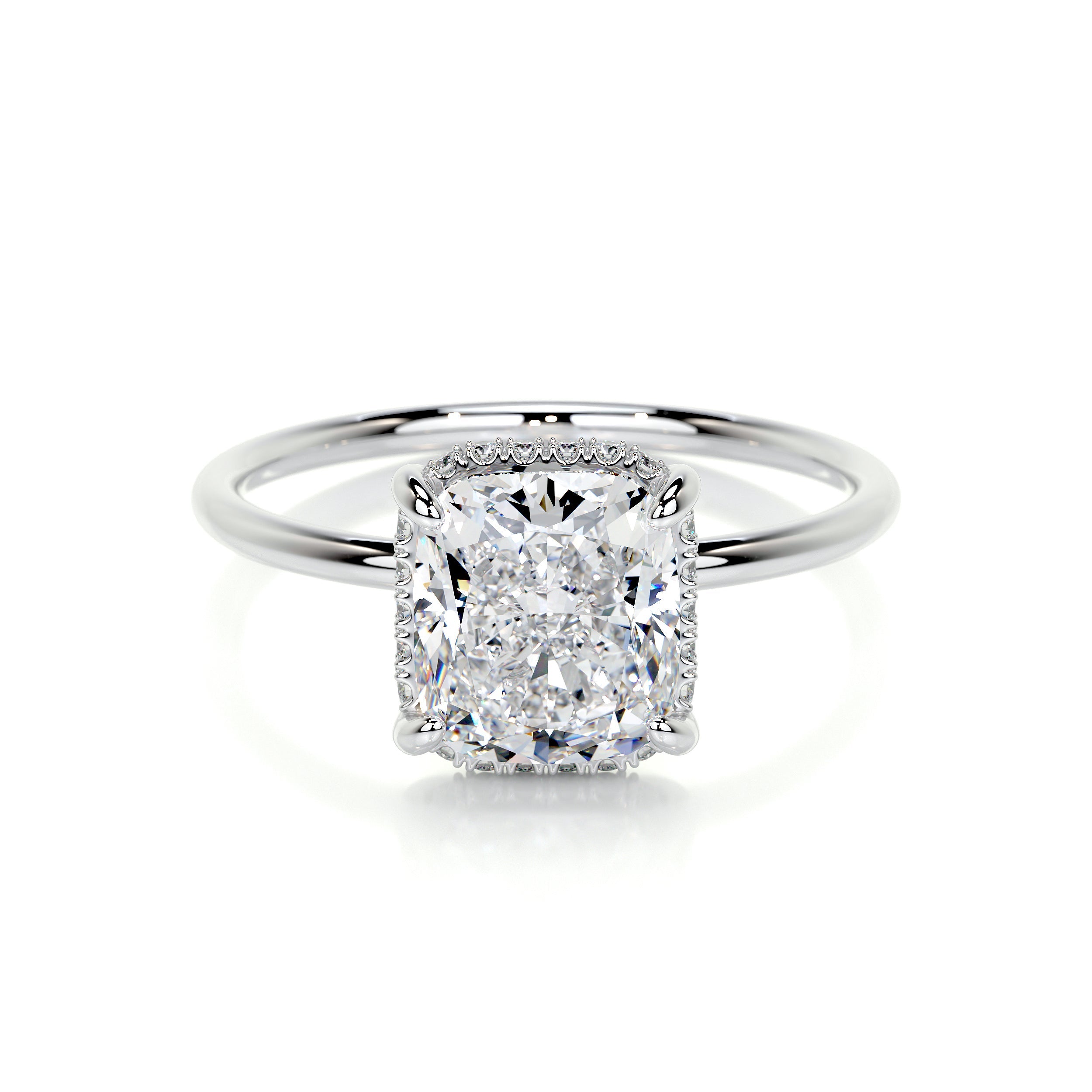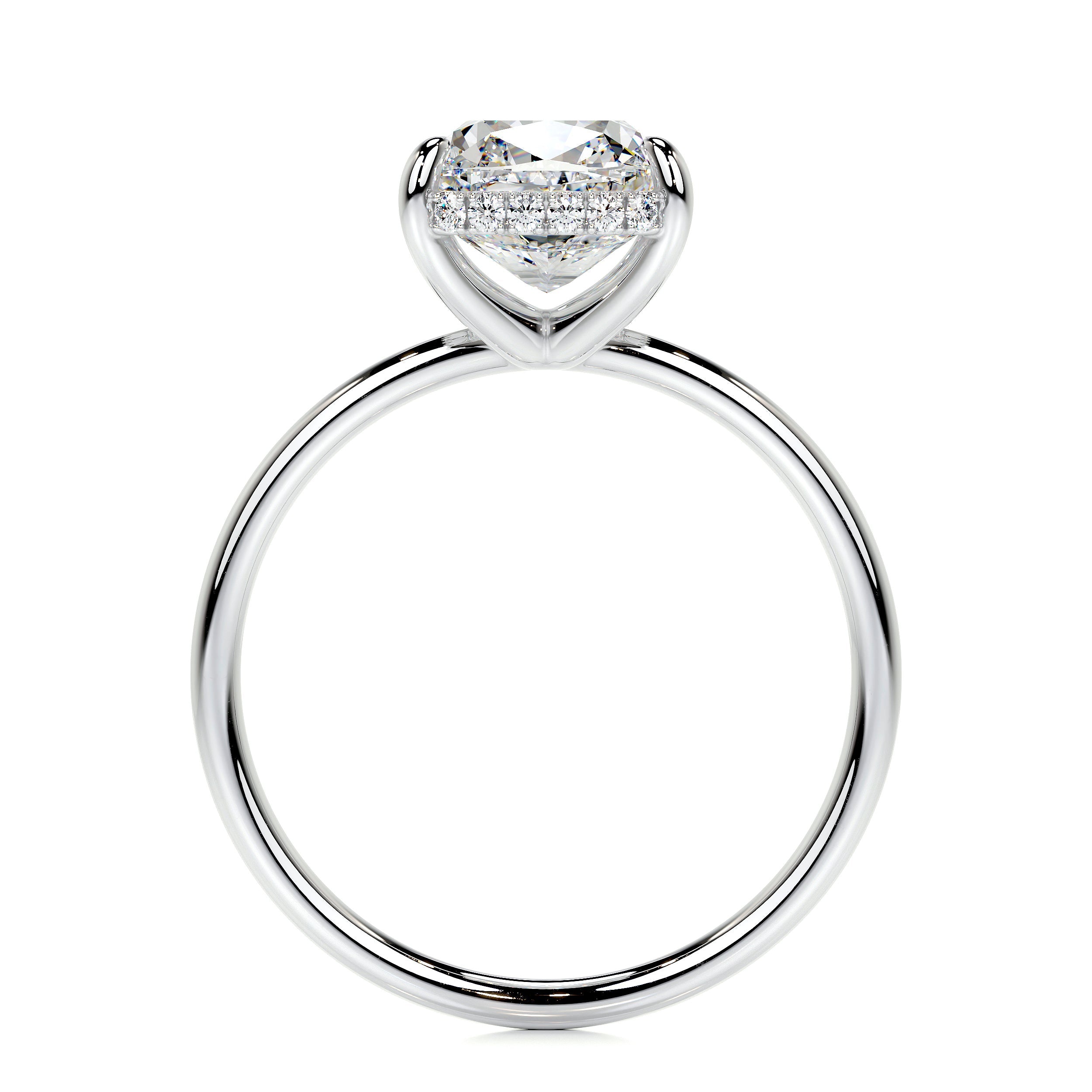Today, brides want their engagement ring to look highly individualized made solely for their taste and style. And they should be able to show their design preferences with this ring. It’s the most important and the most cherished piece of jewelry one could ever own. Looking at her wedding jewelry, the bride wants to be in love with her ring decades from now just as she was the moment it first slid on her finger.
One of the ways a bride can customize her engagement ring is by deciding which precious metal to use in the setting. With gold, there are several popular colors available, including yellow, white or rose (pink) gold.
Then there is platinum, a luxurious gleaming white metal that softens to an elegant patina over time. Both gold and platinum are favored for their rarity and beauty. Each is a precious metal that will last a lifetime and beyond.
Here’s a brief overview of each metal to compare and contrast before deciding on one that is perfect for you.

Yellow Gold creates a welcoming warmth with timeless visual appeal. Modern gold for jewelry is not pure (24K) gold, but rather it’s alloyed with silver and copper to add strength and lasting durability. It comes in a range of karats, including the popular 10K, 14K, and 18K. One of the characteristics of gold (in any color) is its marvelous malleability. This allows jewelers infinite possibilities for creating intricate detailing on any piece. Yellow gold’s rich sheen complements any skin tone and works well with a wide variety of gemstone colors.
White Gold provides a chic, platinum-like appearance but at a more attractive price. This color gold is achieved by alloying with white metals like palladium or nickel. To keep that icy cool vibe, it is plated with rhodium for a brilliant finish. Of course over time, white gold may require some re-plating to keep its super white looking brilliant. Much like yellow gold, white gold is available in the same popular range of karats.
Rose Gold is considered a super feminine choice with its delicate pink tint. Thanks to the inclusion of blending gold with copper, a pink tone in gold emerges. Some alloys include silver. Find it in all karats and remember that its copper content makes it a bit more durable than yellow gold. while its warm romantic tone creates a vintage vibe, it has become increasingly more popular in the bridal jewelry niche for good reason.
Platinum stands alone as a precious metal of exceptional purity and durability. This aristocrat of metals usually contains between 90-95% pure platinum and creates quite a heft. This metal maintains its naturally white color without additional plating, while its hypoallergenic properties are ideal for those with sensitive skin. Over time and from being worn daily, platinum develops a unique soft patina that is considered elegant. Those preferring the original shiny finish can have it re-polished and buffed to restore its original glisten.
Platinum or gold neither metal is objectively better. It all comes down to personal preference. Platinum is the winner for a heavy, denser, rare, and naturally white jewelry metal. The bonus is its unmatched durability and its hypoallergenic properties.
Gold, however, is versatile, typically more affordable and available in several colors,
White gold is a stylish platinum-alternative, coming in at a lower price point. Yellow or rose gold offers warmth and appealing alternatives.
Metals Overview
Platinum jewelry typically contains 90-95% platinum alloyed with any of several precious metals including iridium, ruthenium, palladium, copper, or cobalt. This combining makes the platinum stronger than if it had not been alloyed. Still, it is denser and purer than gold alloys. Platinum is naturally white without requiring plating. It retains its original color permanently. As a denser and heavier metal than gold, platinum jewelry feels substantial.
Yellow gold jewelry is available in 14K (58.3% gold) or 18K (75% gold), having an alloy of metals like with copper and silver. Yellow gold is highly collected for its distinctive yellow tint, lending a classical and timeless aura. Since this jewelry will be worn every day, many consumers prefer that it’s lighter than platinum, making it a comfortable choice for daily wear.
White gold pieces are crafted by blending gold and white alloys like palladium or nickel. The fashionable ultra - white sheen is then rhodium-plated for extra brightness. That brilliant white finish thanks to its rhodium plating lasts a long time. But without periodic maintenance, white gold may begin to appear with a warmer undertone. In terms of overall we weight, it’s comparable to yellow gold.
Rose gold sometimes referred to as pink gold is considered to be feminine and romantic. That’s why some vintage jewelry styles may choose rose gold for its creations. This distinctive gold tint is achieved by mixing gold with copper into the yellow gold mix. The process of creating rose gold is a creative one, and the colors range from a soft blush tone to deep rosy pink depending on the ratio of copper to gold. Jewelry made in rose gold is similar in weight to the other gold colors.
What about the relative durability of each metal? This is often a strong consideration considering bridal jewelry is worn daily for an entire lifetime.
Platinum may be considered the durable, as it generally resists wear and tear.
Yellow and white gold are said to be very durable; however these metals are softer at higher karats. Rhodium on white gold may need re-plating later on.
Rose gold with its copper alloy makes it more durable than yellow gold.

Maintenance and Value
Platinum: Retains white color naturally, develops a patina that can be polished if desired. A more costly metal than gold owing to its rarity and difficulty to work with as a heavy metal.
Yellow gold: Scratches may need polishing; retains color naturally. More affordable than platinum--prices vary according to karat.
White gold: Needs rhodium re-plating every few years. An affordable option over platinum but requires periodic re-plating.
Rose gold: Retains its alluring color so there is minimal upkeep with this hue. Close in price to yellow or white gold.
Sensitive Skin, Hypoallergenic Comparison
Platinum: Since this is a naturally hypoallergenic, it’s ideal for all skin types, especially sensitive skin.
Yellow Gold: While the higher karats are considered hypoallergenic, some alloys may irritate sensitive skin at lower karats.
White Gold: Nickel alloys in white gold may react on some skin, the palladium blends (alloys) are best for those with sensitive skin.
Rose Gold: Since rose gold gets its pinkish glow from copper alloys, it has potential for irritation in sensitive wearers.
Enjoy Shopping for ”The one”
Selecting an engagement ring is an exciting event. The more informed you are as a shopper, the greater satisfaction you’ll have with your choice. Don’t forget, the exact same style ring with the same diamonds can look remarkably different depending on the metal type and color. So when you settle on a style, take some time to admire it in different metals for a truly one-of-a-kind ring.
FAQs
Does gold or platinum require upkeep to keep them looking shiny?
Both precious metals are the most desirable for fine jewelry lovers. But white gold can benefit from occasional rhodium re-plating to maintain its like-new sheen. Platinum can be repolished at the jewelers to get its original high gloss again.
Are white gold, rose gold, and yellow gold each made of pure gold? Each gold color has alloys created specifically for the desired end color. So they are not pure gold. The higher the karat, from 10, 14, to 18, the higher the pure gold content to alloy.
Can rose gold lose its tint?
No, the tint giving rose gold its lovely pink hue is permanent. It acquired its striking tone from the addition of metal alloys like copper which produce a rosy tint in the gold.
Which is more popular, white or yellow gold?
While white gold has enjoyed tremendous popularity in the last few years, a return to yellow gold, with its timeless beauty and warmth is being selected by more brides today. Therefore, a bride choosing the metal color can rely solely on her personal preferences and know that the ring will look up to date for decades.
Why do some high end designers make their rings in platinum?
Platinum has enjoyed a high status ever since it became the preferred metal for royalty back in the 1920s. But it also has some great attributes that consumers want. It’s a rare and very dense metal. Some brides love feeling the “heft” of their ring on their hand. Additionally, it is known to develop a lovely soft patina over time, something many people find desirable.
Gold vs platinum comparison table
| Metal Type | Composition / Colour | Appearance & Weight | Durability & Maintenance | Hypoallergenic | Cost / Value |
|---|---|---|---|---|---|
| Yellow Gold | Gold alloyed with silver and copper. Found in 14K (58%) or 18K (75%). | Warm, classic yellow tone. Lightweight and comfortable for everyday wear. | Durable but softer at higher karats. May need polishing occasionally. No plating required. | Higher karats are more hypoallergenic; lower karats may irritate sensitive skin. | More affordable than platinum. Price depends on karat and gold market. |
| White Gold | Gold alloyed with palladium or nickel, plated with rhodium for brightness. | Bright white, similar to platinum. Similar weight to yellow gold. | Durable but requires re-plating every few years to maintain shine. | Nickel alloys may irritate; palladium blends are better for sensitive skin. | Less expensive than platinum but may need re-plating upkeep. |
| Rose Gold | Gold mixed with copper (and sometimes silver) for a pinkish tint. | Soft blush tone. Similar in weight to other gold types. | Durable due to copper alloy. Minimal maintenance needed. | May cause mild irritation for sensitive skin due to copper. | Similar in price to yellow and white gold. |
| Platinum | 90–95% pure platinum alloyed with iridium or ruthenium. | Naturally white and heavier than gold. Luxurious, substantial feel. | Extremely durable. Develops soft patina over time; can be polished back to shine. | Completely hypoallergenic and ideal for sensitive skin. | More expensive than gold due to rarity and density. |
